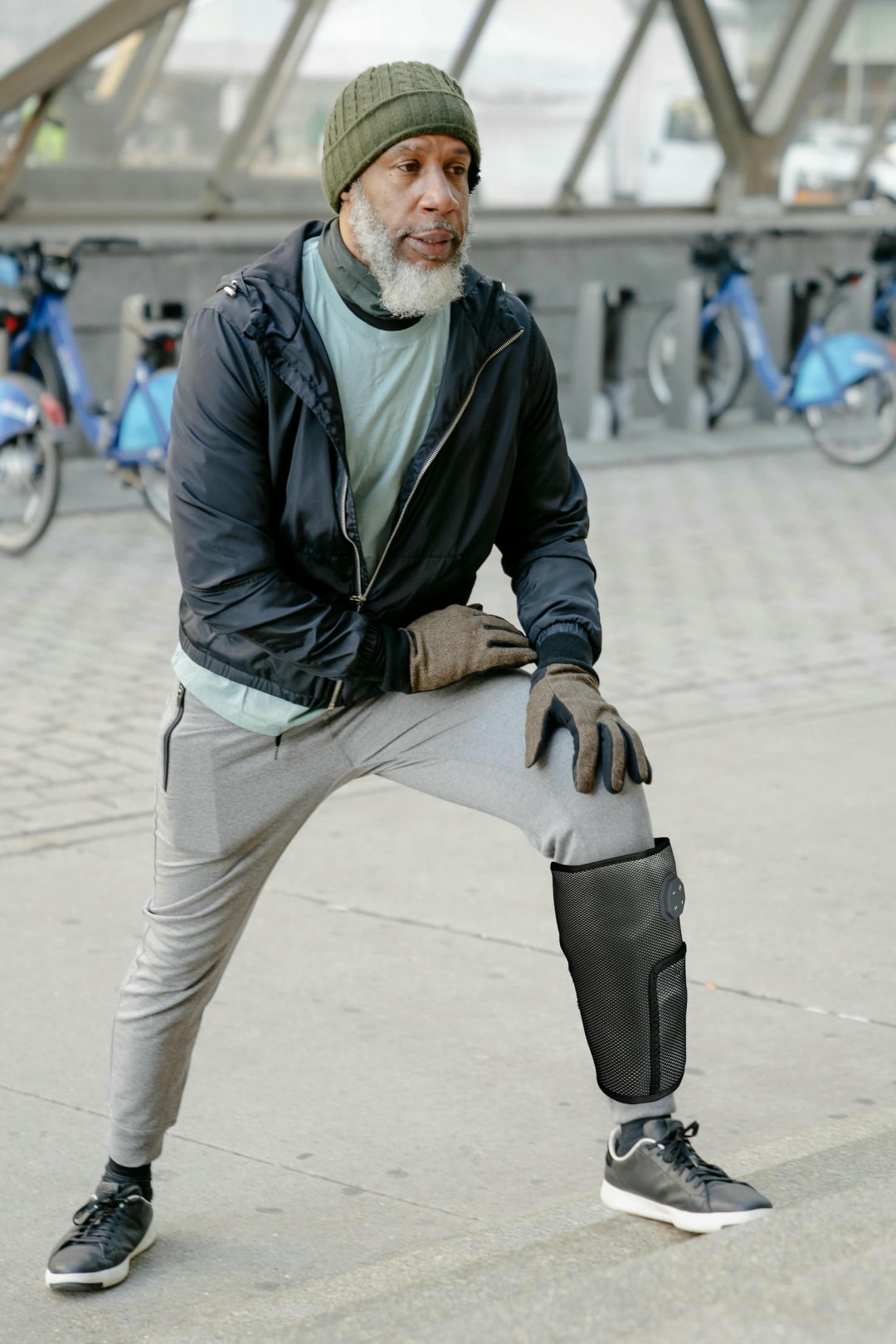Can a Massager Help Psoriatic Arthritis? A Relief Guide
- By Grace
- Updated on
Living with psoriatic arthritis often means navigating a landscape of joint stiffness, swelling, and persistent pain. It can feel like a constant battle, and finding gentle, effective ways to manage discomfort is a top priority. You might wonder, can something as simple as a massager truly make a difference? It’s a valid question, especially when your joints feel tender and sensitive. The answer, I believe, is a hopeful "yes," provided you choose the right tool and approach.
The journey to wellness isn't about grand, sweeping changes but about weaving small, supportive practices into your daily life. A carefully selected massager can be one of those beautiful practices. In this guide, we will explore this question in depth, looking at how different types of massagers work, which ones are best suited for psoriatic arthritis, and which ones you should approach with caution. Let's find a way to bring a little more ease and comfort into your day.
Understanding Psoriatic Arthritis and Joint Pain
Before we dive into solutions, it’s helpful to understand what’s happening in your body. Psoriatic arthritis is an autoimmune condition, meaning your immune system mistakenly attacks healthy cells and tissues. This attack causes inflammation, which is the root cause of the joint pain, stiffness, and swelling you experience. Unlike mechanical wear-and-tear arthritis, this condition can cause entire fingers or toes to swell (dactylitis) and can also affect the points where tendons and ligaments attach to bone (enthesitis).
This underlying inflammation makes the joints particularly sensitive. The goal of any supportive therapy, including massage, is not to fight against the joint but to soothe the surrounding tissues, improve circulation, and gently calm the area without causing further irritation. Think of it as comforting a tired, overworked part of your body rather than trying to force it into submission. This gentle mindset is really, really important when choosing and using a personal massager.

How Can a massager Help Soothe Psoriatic Arthritis Symptoms?
When used correctly, a massager can offer a surprising amount of relief by working in several gentle ways. The primary benefit comes from increasing blood flow to the muscles surrounding the affected joints. Improved circulation helps deliver more oxygen and nutrients to these tissues while helping to flush out inflammatory byproducts, which can contribute to pain and stiffness. This process can help ease the tension that often builds up around sore joints as you naturally try to guard them.
Furthermore, the gentle stimulation from a massager can work on a neurological level. By activating sensory nerves in the skin and muscle, it can help to "distract" the brain from the deeper pain signals coming from the joint—a concept known as the "Gate Control Theory of Pain." Some devices also incorporate gentle warmth, a time-tested method for relaxing tight muscles and easing the achy stiffness that is often worst in the mornings. It’s a simple, comforting way to prepare your body for the day ahead.
Exploring Different Types of Massagers for Sensitive Joints
The market is filled with countless types of massagers, and it’s crucial to know which ones are friends and which are foes for psoriatic arthritis. The key is to avoid aggressive, high-impact tools and gravitate towards those that offer gentle, controlled relief. When you read a massager review, keep an eye out for terms like "gentle," "soothing heat," and "air compression."
The Gentle All-in-One: Multifunctional Massagers
For many with stiff and inflamed joints, a multifunctional massager is a wonderful option. These devices are designed with sensitivity in mind and often combine several therapeutic functions into one unit. They are a far cry from the jarring percussion tools you might have seen.
- Heating & Red Light: Gentle warmth helps to relax the muscles around the joints, significantly reducing stiffness and making movement easier. Red light therapy is believed to penetrate the skin to potentially help reduce inflammation at a cellular level.
- Air pressure/Compression: Instead of poking or prodding, these devices use inflatable chambers that rhythmically squeeze and release, creating a gentle, wave-like pressure. This action is excellent for promoting circulation in hands and feet without putting direct stress on the joints.
- Gentle Vibration: Low-intensity vibration provides that soothing sensory stimulation to help override pain signals, offering comfort without being too intense.

A Word of Caution: Why to Avoid Intense Percussion
Here, we must address a popular but unsuitable tool: the massage gun. While fantastic for deep muscle knots in athletes, these percussive devices are generally not recommended for psoriatic arthritis. Their powerful, hammer-like strikes can be far too aggressive for sensitive, inflamed joints. Using a massage gun directly on or near an affected joint could easily trigger a pain flare-up and increase inflammation, doing more harm than good. Your body is asking for comfort, not combat.
Simple & Controlled Relief: Manual Massage Tools
Sometimes, the simplest tools offer the greatest sense of control and safety. Manual massagers, like finger pressure pads, knobby balls, or small wooden rollers, put you in the driver's seat. You control the exact location, pressure, and duration of the massage, ensuring it never feels overwhelming. A useful tip on how to give a massager to yourself with these tools is to focus on the fleshy, muscular areas around the joint, not directly on the bone or the most tender spot. This can provide relief from secondary muscle tightness. These tools are also affordable and portable, making them a great starting point.
Tips for Using a Personal Massager Safely and Effectively
Bringing a massager into your routine can be a beautiful act of self-care, but it's essential to do so mindfully. Your body is your best guide, and listening to its signals is the most important rule. If you are ever searching for a professional "massage near me", be sure to inform the therapist about your condition; the same principle of care applies when using a device at home.
To ensure your experience is both safe and beneficial, I always recommend a gentle and cautious approach. Think of it as getting to know a new friend—you start with gentle conversation, not an intense debate. This approach will help you build a positive and trusting relationship with this new tool in your wellness kit.
- Start Low and Slow: If your massager has intensity settings, always begin with the lowest one. You can gradually increase it if it feels good, but there is no prize for using the highest setting. A 5-10 minute session is a great starting point.
- Avoid Direct Pressure on Flare-Ups: Never press directly onto a joint that is visibly swollen, red, or acutely painful. Instead, work on the surrounding muscles to ease tension.
- Pain is a Stop Sign: Massage should feel good or, at most, "comfortably intense" on a tight muscle. Sharp, shooting, or increasing pain is a clear signal to stop immediately.
- Consult Your Healthcare Team: This is non-negotiable. Before starting any new therapy, including using a personal massager, talk to your rheumatologist or a physical therapist. They know your specific condition and can provide personalized advice.
Your Path to Gentle Relief
So, can a massager help with psoriatic arthritis pain? The answer is a resounding yes—the *right* massager, used with care and awareness, can be an incredibly valuable part of your pain management toolkit. The key is to choose gentle, soothing options that feature warmth and mild compression while steering clear of aggressive percussive tools. Remember to listen to your body, start slowly, and always consult your doctor.
Incorporating a gentle massage into your daily or weekly routine is a powerful way to reclaim a sense of control and offer yourself a moment of dedicated care. It's a small, beautiful practice that can help soothe your body, calm your mind, and bring a little more joy back into your life.
Frequently Asked Questions
What are the most recommended massagers for general use?
For general use, versatility is key. Handheld wand massagers are popular because they can reach various body parts like the back, neck, and legs. Shiatsu massage pillows with heat are excellent for the neck and lower back. For feet, a dedicated foot massager with rollers and air compression can be incredibly relaxing. The best choice depends on your primary target area, but options with adjustable intensity and a heat function typically offer the most satisfying experience for everyday aches and pains.
How to compare massagers by brand and price?
When comparing massagers, look beyond just the price tag. First, identify the features you need (e.g., heat, percussion, air compression, portability). Then, research brands known for quality and good customer service. Reading a recent massager review from multiple sources can be very insightful. A higher price often correlates with a more powerful motor, more durable materials, and a longer warranty. A budget model might be fine for occasional use, but if you plan to use your personal massager regularly, investing in a reputable brand is often worthwhile for both performance and longevity.
Are massagers safe for daily use?
For most healthy individuals, using a massager for 15-20 minutes on a specific area daily is generally safe. However, it's crucial to listen to your body. If you feel any bruising, soreness, or increased pain, you should take a break. For individuals with specific health conditions like psoriatic arthritis, deep vein thrombosis, or severe osteoporosis, it is essential to consult a doctor first. They can provide guidance on safe frequency and intensity based on your personal health profile. Always read the manufacturer's instructions for recommended usage times.




